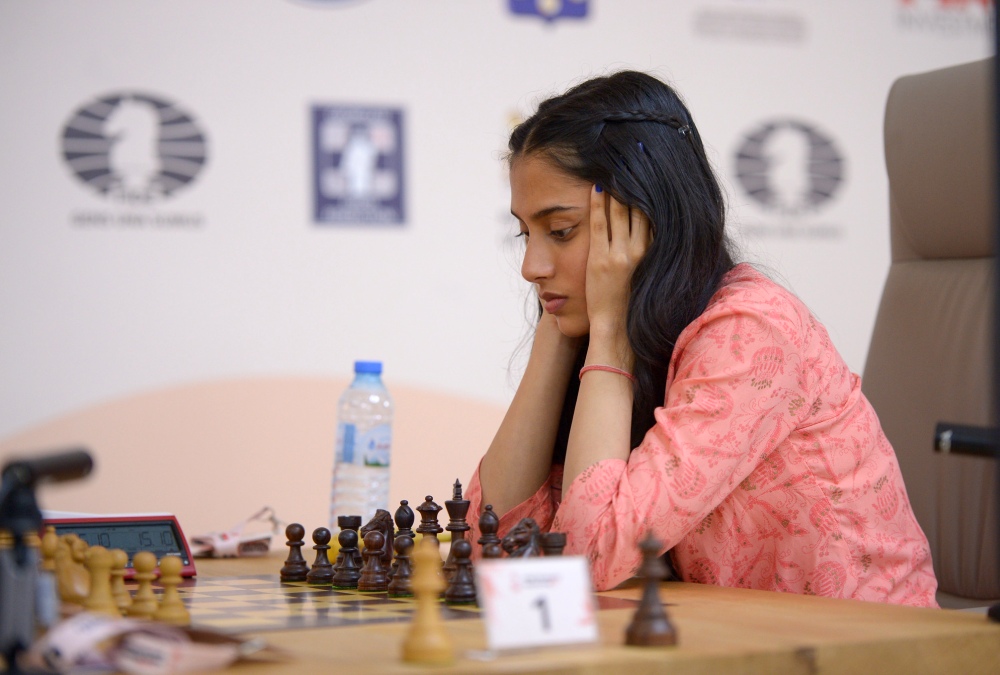
Divya Deshmukh, the 19-year-old International Master from Nagpur, Maharashtra, etched her name into chess history by defeating Grandmaster Humpy Koneru 1.5–0.5 in the tiebreaks to win the Women’s World Cup.
She now follows in the footsteps of GM Alexandra Kosteniuk (2021) and GM Aleksandra Goryachkina (2023) as the third-ever winner of this prestigious title.
In the two 15+10 rapid tiebreak games, Divya showed both resilience and composure. After missing a golden opportunity in the first game, which ended in a draw, she brought elite-level precision to the second. There, she equalised comfortably as Black, then seized control as Humpy slipped under time pressure—clinching the crown in emphatic fashion.
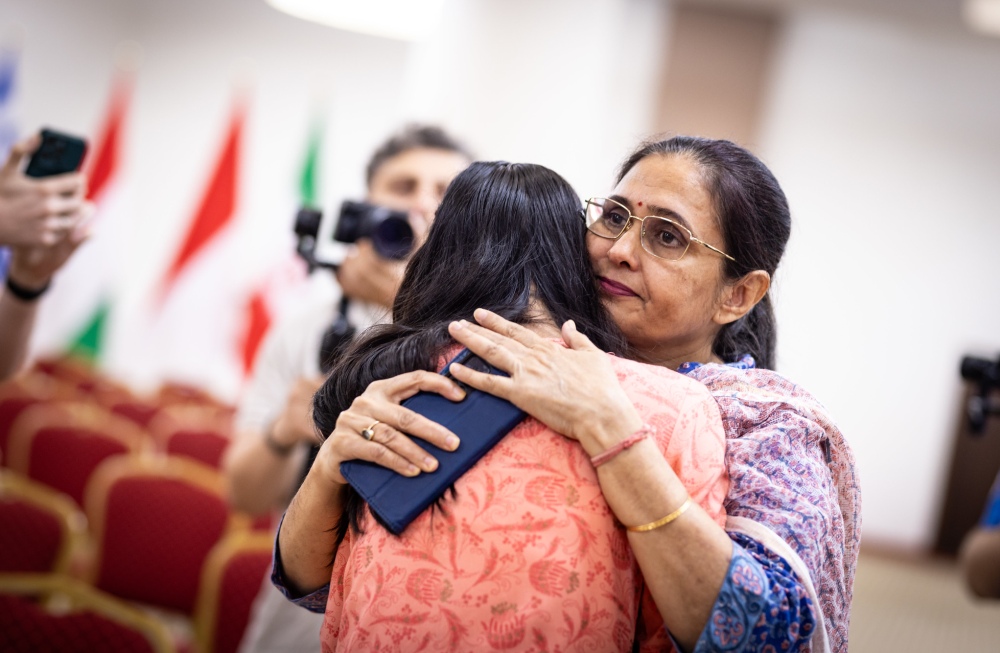
With this remarkable win, Divya Deshmukh is now not only the 2025 Women’s World Cup Champion, but also one of the most exciting young stars in the world of chess.
After the final game, an emotional Divya embraced her mother before giving a short interview: “It’s hard for me to speak now. Of course, this definitely means a lot, but there is a lot more to achieve, so I am hoping that this is just the start,” she said.
With this triumph, Divya not only secures the USD 50,000 first prize, but also automatically earns the Grandmaster (GM) title—the highest title in chess. In doing so, she becomes one of the very few players in history to achieve it by winning a major FIDE event rather than collecting the usual three GM norms and 2500 rating.
Reflecting on this, Divya shared: “I still need time to process it. I think it was fate, me getting the Grandmaster title this way, because before this I didn’t even have one norm, and now I’m a Grandmaster.”
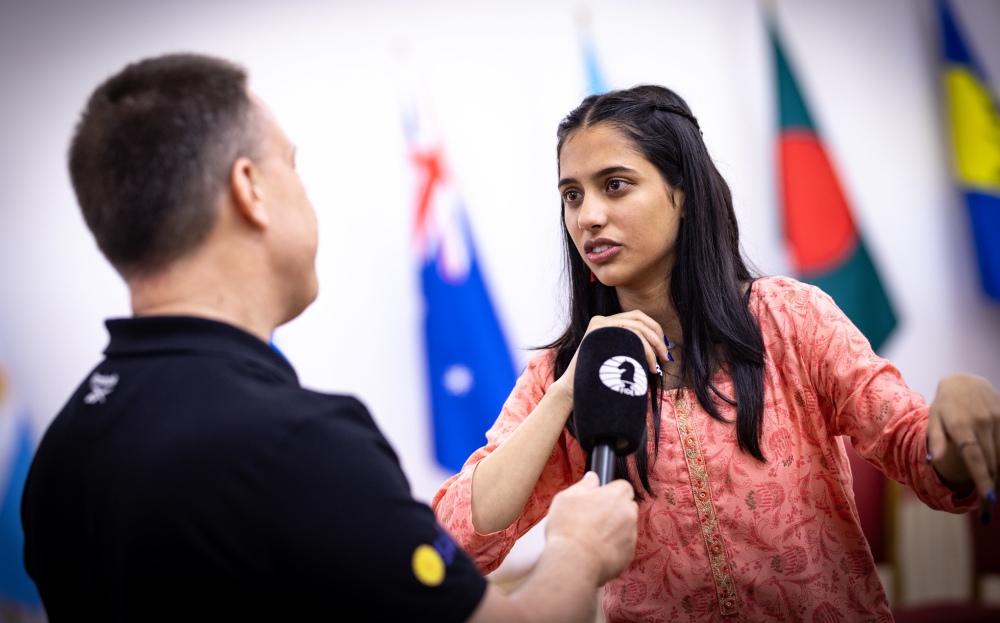
Divya also qualifies for the 2026 Candidates Tournament, alongside the second and third-place finishers— GM Humpy Koneru and former Women’s World Champion Tan Zhongyi.
A full prize-giving report with photographs is scheduled for later this evening.
Up next: A closer look at today’s dramatic tiebreak games.
Tiebreak Game 1: A missed opportunity
FIDE President Arkady Dvorkovich was on hand to greet both finalists before the round, wishing them the best of luck in the decisive tiebreak.
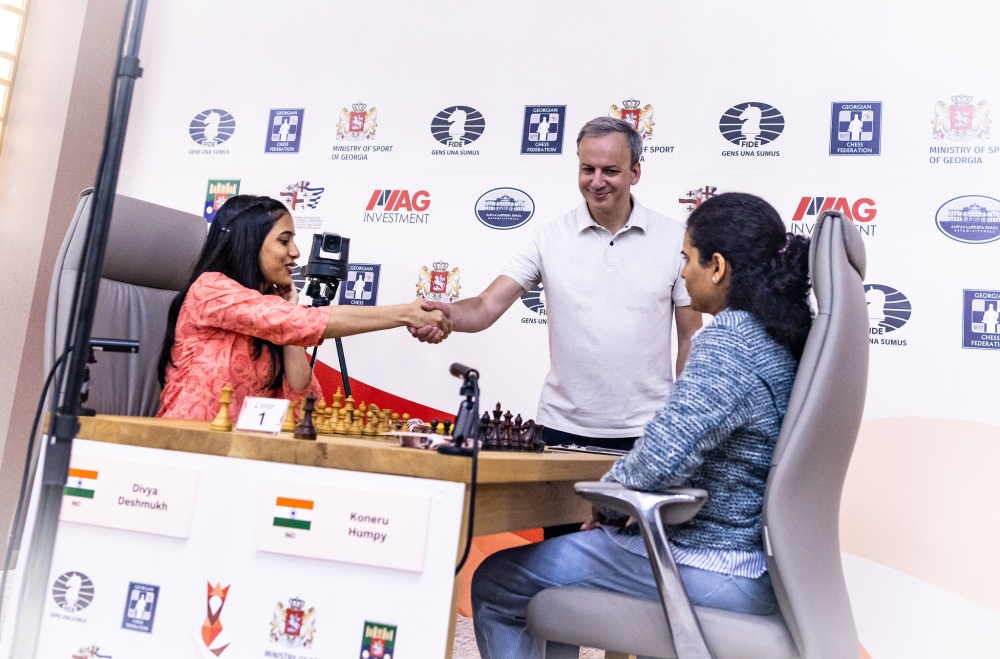
At exactly 12:00, the chief arbiter started the clocks for the first of two 15+10 rapid games.
Divya opened with 1.e4, and in a surprise deviation from her usual 2…Nc6 systems, Humpy Koneru opted for the Petroff Defence (2…Nf6)—a line she had largely set aside in favor of the ultra-solid Berlin since late 2023.
Humpy had played the Petroff extensively after becoming a Grandmaster in 2002, and she returned to it today with a very specific sub-variation in mind.
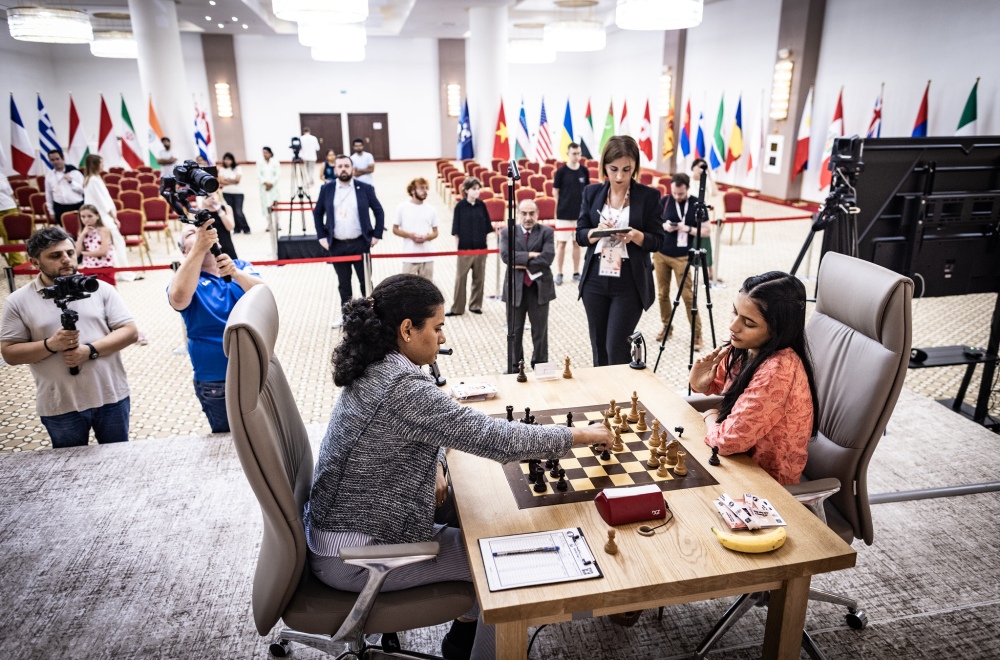
On move 6, she chose 6…Bf5, a reliable and less theoretical side-line she had previously used to defeat Divya in the Tata Steel India Blitz 2023. This system gives White dynamic play in exchange for an isolated queen’s pawn (IQP), while Black aims to reach slightly better endgames by neutralizing the activity.
Up until move 15, the players followed a well-known game between Leon Luke Mendonca and Arseniy Nesterov from the 2024 Biel Masters, which ended in a draw.
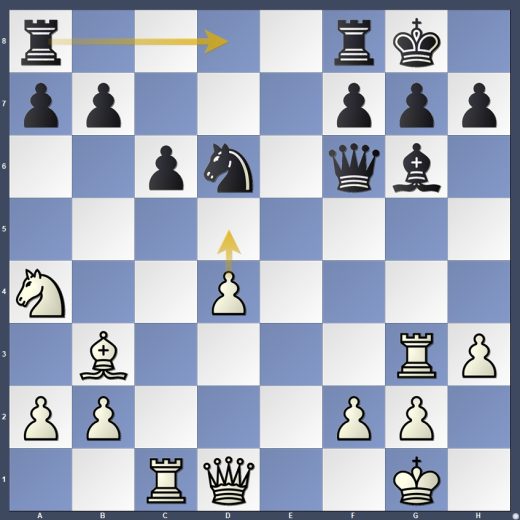
At this point, Divya made a principled and bold decision: she played 20.d5, aiming to liquidate the IQP and open lines for her active minor pieces. Humpy responded instantly with 20…Rad8!, targeting the newly weakened center. In the ensuing tactical sequence, Humpy won the d5-pawn, but White had just enough piece activity to maintain dynamic equality.
Then came the blunder. With the clock ticking down to her final 20 seconds, Humpy played 33…Re7, overlooking a tactical shot.
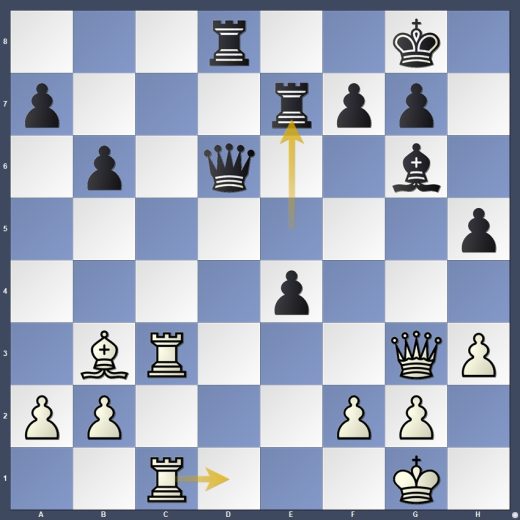
Divya immediately responded with 34.Rd1!, threatening to trade rooks and win the bishop on g6 after 34…Qb8, due to the pin and pressure. The only defense was for Humpy to sacrifice her queen, entering a materially imbalanced but defensible endgame: rook, bishop, and pawn vs. queen.
Despite the material imbalance, Humpy built a fortress, Divya had a chance to break through on move 37, but missed this opportunity and the game ended in a draw.
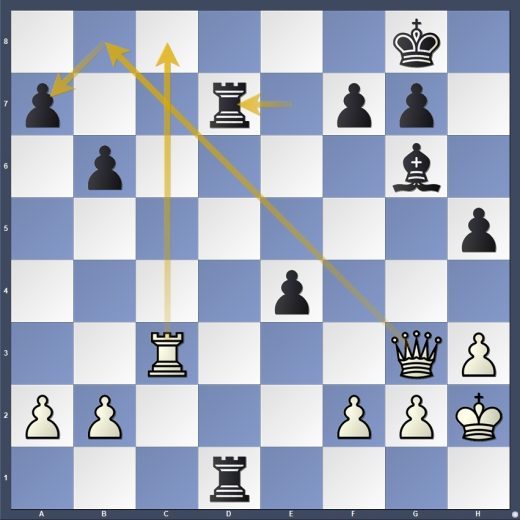
Instead of 37.Rc8?, trading the rooks Divya should have played 37.Qb8+, picking up the a7-pawn. The point is that the natural 37…Kh7 fails to 38.Rc8! followed by 39.Rh8+ winning.
“A big missed chance for Divya,” remarked former five-time World Champion Viswanathan Anand, who joined the official broadcast with expert commentary and praised both players for their fighting spirit.
Tiebreak Game 2: Nerves, risk—and triumph
With the score tied after the first rapid game, the pressure was at its peak as Humpy Koneru opened the second game with the Catalan Opening. In response, Divya Deshmukh chose the aggressive 4…dxc4, 5…Bb4+ variation—an ambitious and increasingly popular system at the top level, favored by elite Grandmasters like Dmitry Andreikin, Grigoriy Oparin, and Parham Maghsoodloo.
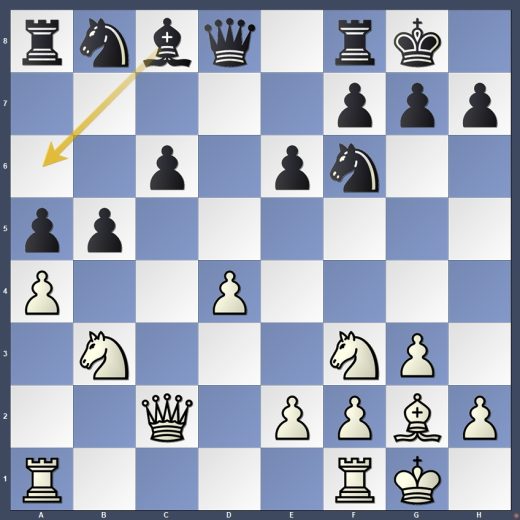
In this line, Black accepts a pawn sacrifice, giving White a lead in development and long-term pressure on the dark squares. However, modern theory has shown that if Black times the pawn return correctly, the position can often simplify into a defensible or even equal endgame.
“This opening does give you a chance to counterattack,” said Vishy Anand during the live broadcast, “but Divya will have to play passively for a few moves, which is not really her style.”
Despite the slight passivity, Divya held on to the extra pawn heading into the middlegame, though at the cost of weaknesses on a5 and c6. Her pieces were slightly cramped, but the position remained balanced according to engines.
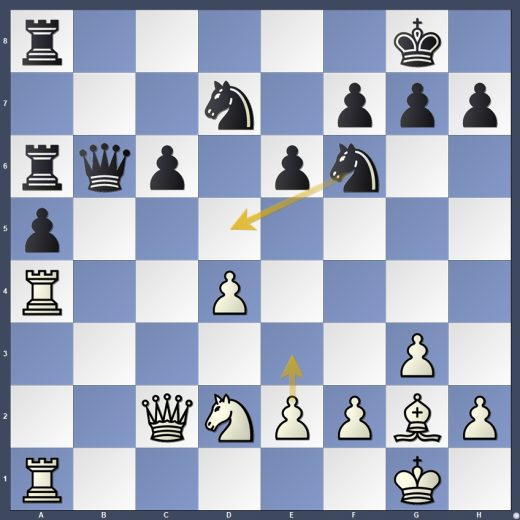
Humpy’s major problem, however, was time. While Divya had over 11 minutes, Humpy was already under three. For the next 20+ moves, the players circled each other with careful maneuvers, but made little concrete progress. A draw looked imminent. And then came the turning point.
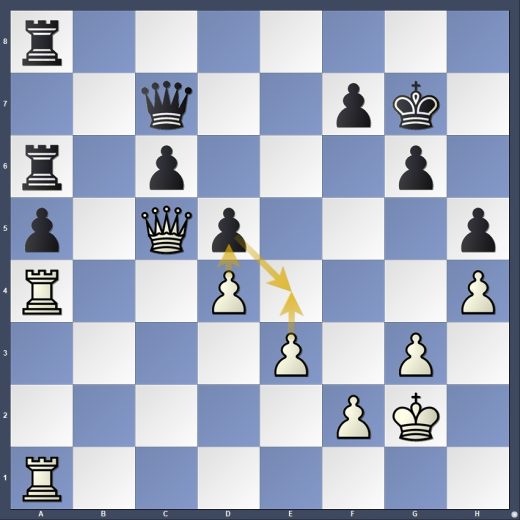
With less than a minute left on her clock, Humpy suddenly played 40.e4?!, a central break that shocked commentators. After 40…dxe4, she immediately followed up with 41.d5?, a blunder that allowed Divya to strike with 41…Qe5!, seizing control.
“A totally self-inflicted collapse by Humpy,” said Anand. “There was no need at all for e4 and d5. It’s one of those situations where your nerves just get the better of you, and there’s nothing you can do.”
Though Divya soon returned the favor with an imprecise reply, the game transitioned into a tense rook ending.
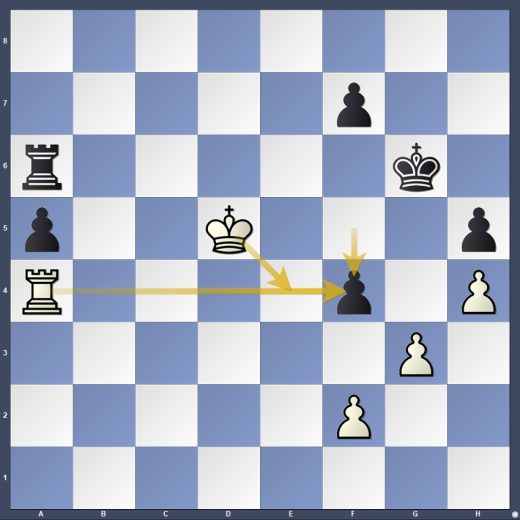
Here, Divya sacrificed a pawn with 53…f4, aiming to activate her king via f5. Humpy could still hold with 54.Ke4!, but instead she played 54.Rxf4?, allowing Divya to advance her a-pawn. Despite mutual time pressure and a few shaky moments, Divya ultimately converted the advantage and clinched the title.
“I definitely need to learn endgames,” Divya admitted candidly after the win. “I’m pretty sure I messed up the ending at some point.”
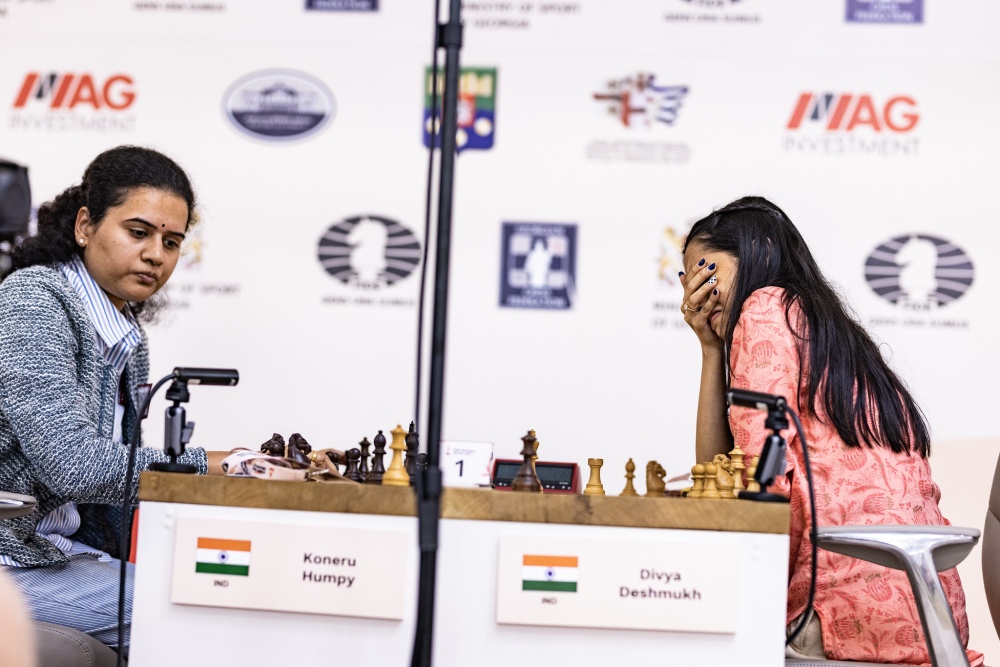
Written by IM Michael Rahal (Batumi, Georgia)
Photos: Anna Shtourman
About the tournament:
The 2025 FIDE Women’s World Cup took place from July 6th to July 28th in Batumi (Georgia) and brought together the world’s best female chess players. A total of 107 players from 46 different federations participated in the event, including seventeen of the current top twenty!
Chess legends, seasoned professionals and emerging talents contested for the $50,000 first prize, in addition to three qualifying spots for the Candidates.
The full pairings tree and day-by-day results can be found on the Women’s World Cup website.


